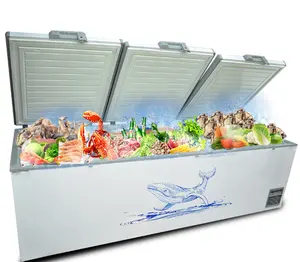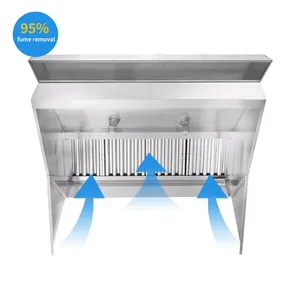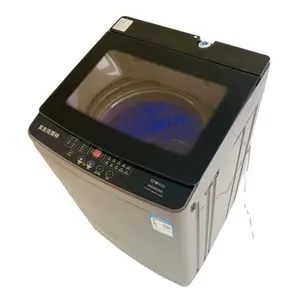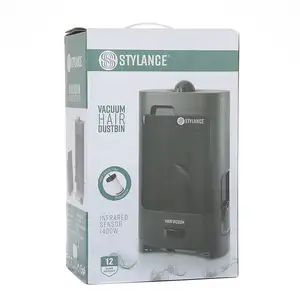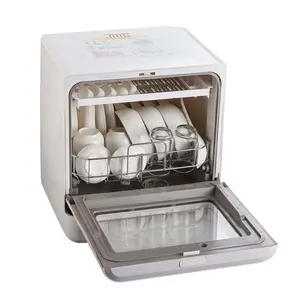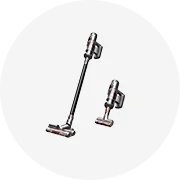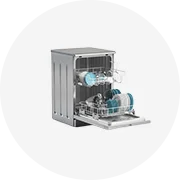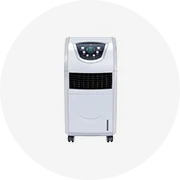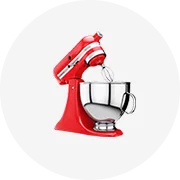Sektörünüzde popüler

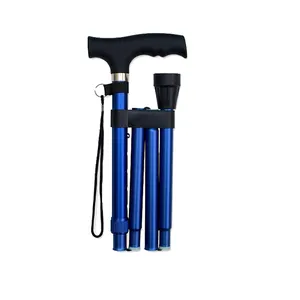




Otomatik açılımı yeni dayanıklı katlanır koltuk değtch sandalye rehabilitasyon yaşlı koltuk değtches yetişkin koltuk değtches
₺147,91 - ₺182,07
Minimum Sipariş Miktarı: 100 Adet
Parça başına nakliye: ₺69,00







Jensan özel 18kN 45MM İç genişlik ayarlı dokuma bahar toka düşme koruması için
₺18,45 - ₺23,23
Minimum Sipariş Miktarı: 10 Adet







2 tonluk vinç halat yeşil endüstriyel yuvarlak esnek kemer kayışı
₺40,99 - ₺54,66
Minimum Sipariş Miktarı: 1 Adet







1 "2" 3 "4" sarı kırmızı turuncu mavi toplu kilit kayışları kravat aşağı kemer stokta
₺84,03 - ₺92,57
Minimum Sipariş Miktarı: 300 Adet



Yüksek mukavemetli güvenlik Polyester emniyet kemeri omuz askısı 50mm koltuk dokuma kayış emniyet kemeri araba emniyet kemerleri
₺3,42 - ₺6,84
Minimum Sipariş Miktarı: 10 Metre







Dayanıklı nefes mavi güvenlik yelek kısıtlama düşme önleme tekerlekli sandalye emniyet kemeri
₺102,48 - ₺131,51
Minimum Sipariş Miktarı: 500 Adet





Ayarlanabilir Tekerlekli Sandalye Emniyet Emniyet Kemeri Ve Ağır Tıbbi Sınırlamalar göğüs askısı
₺107,94 - ₺114,78
Minimum Sipariş Miktarı: 1000 Adet





Tekerlekli sandalye emniyet kemeri, tekerlekli sandalye emniyet kemeri tekerlekli sandalye kemeri emniyet kemeri ayarlanabilir hasta bakım koltuk askısı yaşlılar için
₺314,60 - ₺366,86
Minimum Sipariş Miktarı: 500 Adet






Yaşlı engelli ürün sürgülü önlemek için tekerlekli sandalye koltuk kemer veya düşen
Gönderime Hazır
₺304,01 - ₺409,90
Minimum Sipariş Miktarı: 2 Adet
Parça başına nakliye: ₺389,07






Yaşlı hastalar yatak kısıtlama kayışı tekerlekli sandalye koltuk emniyet kemeri emniyet kemeri
₺129,81 - ₺396,24
Minimum Sipariş Miktarı: 500 Takım





Sıcak satış güvenlik engelli hasta asansörü sling tekerlekli sandalye transferi kemer 4 kolları
₺371,99 - ₺395,90
Minimum Sipariş Miktarı: 100 Adet





Emniyet göğüs askısı tekerlekli sandalye kemerler önlemek sürgülü tekerlekli sandalye emniyet kemeri
₺140,05 - ₺153,72
Minimum Sipariş Miktarı: 1 Adet






WH907 çelik tekerlekli sandalye emniyet katı manuel katlanabilir tekerlekli sandalye taşıma tekerlekli sandalye ile dayanıklı kol dayama ve emniyet kemeri
₺1.537,12 - ₺1.673,75
Minimum Sipariş Miktarı: 100 Takım






24 inç büyük tekerlekler mavi çerçeveli tekerlekli sandalye engelli hasta yaşlı tekerlekli sandalye emniyet kemeri
₺1.759,15 - ₺1.776,23
Minimum Sipariş Miktarı: 10 Birim
Parça başına nakliye: ₺12.506,99






Tıbbi emniyet kemeri hastane kayışları kolay kurulum tekerlekli sandalye emniyet kemeri ve emniyet kemeri
₺67,98 - ₺121,27
Minimum Sipariş Miktarı: 1 Adet




Tekerlekli sandalye parçaları uzunluğu ayarlanabilir tekerlekli sandalye emniyet kemeri için manuel ve elektrikli tekerlekli sandalye
₺81,98 - ₺102,48
Minimum Sipariş Miktarı: 500 Adet





Tekerlekli sandalye emniyet bel kısıtlama kayışı Anti-Fall bel kemeri yaşlılar için
₺19,82 - ₺29,72
Minimum Sipariş Miktarı: 500 Takım






Anti-damper düşmesini önlemek basketbol spor eğlence tekerlekli sandalye yüksek kalite emniyet kemeri ve ayak kayışı
₺39.623,40
Minimum Sipariş Miktarı: 5 Adet






Ayarlanabilir tekerlekli sandalye emniyet kemeri Anti kayma koltuk sabitleme bandı felç yaşlı hasta kısıtlama sabitleme kayışı koruma Brace
Gönderime Hazır
₺163,28 - ₺187,87
Minimum Sipariş Miktarı: 100 Adet
Parça başına nakliye: ₺1.842,49






Satın tekerlekli sandalye Footrest bacak buzağı askı emniyet kemeri tıbbi güvenlik taşıma ayak destek kemeri yaşlı için
₺6.831,62 - ₺10.247,43
Minimum Sipariş Miktarı: 1 Karton






Dayanıklı kol dayama ve emniyet kemeri ile çelik tekerlekli sandalye güvenlik katı manuel katlanabilir tekerlekli sandalye taşıma tekerlekli sandalye
₺1.639,59 - ₺2.151,97
Minimum Sipariş Miktarı: 2 Adet






Tıbbi tekerlekli sandalye aksesuarları sabit askı kısıtlama kayışı naylon güvenlik tekerlekli sandalye emniyet kemerleri tekerlekli sandalyeler
₺148,59 - ₺315,97
Minimum Sipariş Miktarı: 1 Adet






Taşıma tekerlekli hafif katlanabilir katlanır taşıma tekerlekli sandalye Ultralight taşınabilir seyahat emniyet kemeri
₺1.543,95 - ₺1.711,33
Minimum Sipariş Miktarı: 1 Adet





Tıbbi kısıtlama kayışları hasta bakımı emniyet kemeri bel Lap sandalye tekerlekli sandalye emniyet kemeri yaşlı için
₺170,80 - ₺204,95
Minimum Sipariş Miktarı: 2 Poşet





Ayarlanabilir tekerlekli sandalye koltuk emniyet kemeri bazalı yatak yaşlı hasta için emniyet kemeri anti-sonbahar Gait kemer
Gönderime Hazır
₺85,40 - ₺102,48
Minimum Sipariş Miktarı: 1 Adet
Parça başına nakliye: ₺332,70




Serebral palsi tekerlekli sandalye ile rahat ve emniyet kemeri JL9030L fiyat
₺5.465,30
Minimum Sipariş Miktarı: 10 Adet



Katlanır siyah alüminyum tekerlekli sandalye katlanabilir tekerlekli sandalye emniyet kemeri ile
₺1.332,17 - ₺2.220,28
Minimum Sipariş Miktarı: 500 Adet





Uzanmış arkalığı bebek araba koltuğu tekerlekli sandalye güçlü emniyet kemeri
₺6.319,25 - ₺7.002,42
Minimum Sipariş Miktarı: 20 Adet
Parça başına nakliye: ₺16.777,44










Emniyet kemeri ile yaşlı felçli hasta tekerlekli sandalye
₺987,17 - ₺1.093,06
Minimum Sipariş Miktarı: 1 Adet





Tıbbi hasta uzuv sabit kayış yatak kısıtlama kayış anti-sonbahar bel kemeri yaşlılar için emniyet kemeri
Gönderime Hazır
₺69,35 - ₺81,98
Minimum Sipariş Miktarı: 100 Adet
Parça başına nakliye: ₺382,92





Ayarlanabilir düşme önleme korkuluk koruması kemer sabit yatak kısıtlama sapanlar yaşlılar için emniyet kemeri kemer
₺170,80 - ₺273,27
Minimum Sipariş Miktarı: 2 Adet






Seyahat için esnek ve kullanışlı emniyet kemeri elektrikli mobil Scooter engelli katlanır taşınabilir elektrikli tekerlekli sandalye
₺7.173,21 - ₺7.514,79
Minimum Sipariş Miktarı: 5 Birim
Parça başına nakliye: ₺4.474,72






Hemşirelik kemeri güçlendirmek için ayağa kalkmak için Transfer kemeri kolu geri kaldırma hareketi kemeri
₺112,73 - ₺119,56
Minimum Sipariş Miktarı: 500 Adet
Parça başına nakliye: ₺14,01






Tekerlekli sandalyeden yatağa bacak kayışları transferi ile yürüyüş yardım cihazı güvenlik hasta transferi Gait kemer
₺166,35
Minimum Sipariş Miktarı: 100 Adet




Engelli yaşlı tekerlekli sandalye koltuk pedi hasta Transfer kemeri kaldırma güvenliği
₺9.222,69 - ₺10.247,43
Minimum Sipariş Miktarı: 1 Takım
Parça başına nakliye: ₺15.190,80






2023 sıcak ürün tekerlekli sandalye ayarlanabilir ayaklık tekerlekli sandalye aksesuar yedek parçalar
₺6,84 - ₺34,16
Minimum Sipariş Miktarı: 1 Adet

Devre dışı alüminyum tekerlekli sandalye serebral palsili çocuklar için
₺6.831,62
Minimum Sipariş Miktarı: 10 Adet





Küçük boyutlu Anti-tilt engelli tekerlekli sandalye güvenlik tekerlekli sandalye rehabilitasyon terapi malzemeleri
Gönderime Hazır
₺17.352,32 - ₺19.743,39
Minimum Sipariş Miktarı: 1 Birim
Parça başına nakliye: ₺34.158,10






AJ-104 taze varış renkli tekerlekli Fauteuil roulant
₺2.322,76 - ₺2.561,86
Minimum Sipariş Miktarı: 20 Adet
Parça başına nakliye: ₺3.084,48
En iyi kategoriler
tekerlekli sandalye emniyet kemeri hakkında
tekerlekli sandalye emniyet kemeri İle yemek pişirmeyi daha eğlenceli hale getirin. Alibaba.com'da. Çevrimiçi platform, marka ve bütçeye göre tercihe bağlı olarak çeşitli seçeneklere sahiptir. Bununla birlikte, tekerlekli sandalye emniyet kemeri. Piyasa oranlarına göre uygun fiyatlarla mevcuttur. Çevrimiçi site aynı zamanda ürün seçmeyi ve satın almayı da kolaylaştırdı.
Kapsamlı arama ve filtre araçları, müşterinin tercih ettiği cihaza odaklanmasını sağlar. Elektrik, gaz, ticari ve ev seçeneklerinin tümü sağlanır. Ücretli numuneler ve sevkiyata hazır alternatifler de verilmektedir. Bu öğelerin teslimatı ve nakliyesi, makul bir geri dönüş süresi ile oldukça uygundur. Satış temsilcileri de satış ve tekerlekli sandalye emniyet kemeri konusunda yardımcı olabilir.
Güç, stil ve pişirme yüzeyleri, tekerlekli sandalye emniyet kemeri söz konusu olduğunda dikkate alınması gereken önemli konulardır. Mağazada bulunan elektrik üreticisi seçenekleri, taşınabilirlik için kolaylıkla fişten çekilebilir. Ayrıca kullanımlarında daha yaygın olarak kabul edilebilir ve esnektirler. Gazı tercih edenler için çevresel olarak sürdürülebilir özelliklere sahip ürünler mevcuttur. Benzer şekilde enerji tüketiminde daha verimli oldukları için karlılık ve verimlilik açısından avantajlı olacaktır. Ticari seçenekler arayan müşteriler, mağazadaki geniş çalışma yüzeylerine sahip cihaz seçeneklerinden yararlanabilir. Alibaba.com'daki
tekerlekli sandalye emniyet kemeri, müşteri ihtiyaçlarına son derece uyarlanabilir ve uygun maliyetlidir. Mağaza, hem ev hem de ticari seçenekler için ihtiyaç duyulacak her şeye sahiptir. Çevre bilincine sahip müşteriler bile belirli ürün teklifleriyle değerlendirilir. Mağazayı aramak için biraz zaman ayırın ve sunulan harika fırsatlardan yararlanın.
Kapsamlı arama ve filtre araçları, müşterinin tercih ettiği cihaza odaklanmasını sağlar. Elektrik, gaz, ticari ve ev seçeneklerinin tümü sağlanır. Ücretli numuneler ve sevkiyata hazır alternatifler de verilmektedir. Bu öğelerin teslimatı ve nakliyesi, makul bir geri dönüş süresi ile oldukça uygundur. Satış temsilcileri de satış ve tekerlekli sandalye emniyet kemeri konusunda yardımcı olabilir.
Güç, stil ve pişirme yüzeyleri, tekerlekli sandalye emniyet kemeri söz konusu olduğunda dikkate alınması gereken önemli konulardır. Mağazada bulunan elektrik üreticisi seçenekleri, taşınabilirlik için kolaylıkla fişten çekilebilir. Ayrıca kullanımlarında daha yaygın olarak kabul edilebilir ve esnektirler. Gazı tercih edenler için çevresel olarak sürdürülebilir özelliklere sahip ürünler mevcuttur. Benzer şekilde enerji tüketiminde daha verimli oldukları için karlılık ve verimlilik açısından avantajlı olacaktır. Ticari seçenekler arayan müşteriler, mağazadaki geniş çalışma yüzeylerine sahip cihaz seçeneklerinden yararlanabilir. Alibaba.com'daki
tekerlekli sandalye emniyet kemeri, müşteri ihtiyaçlarına son derece uyarlanabilir ve uygun maliyetlidir. Mağaza, hem ev hem de ticari seçenekler için ihtiyaç duyulacak her şeye sahiptir. Çevre bilincine sahip müşteriler bile belirli ürün teklifleriyle değerlendirilir. Mağazayı aramak için biraz zaman ayırın ve sunulan harika fırsatlardan yararlanın.

